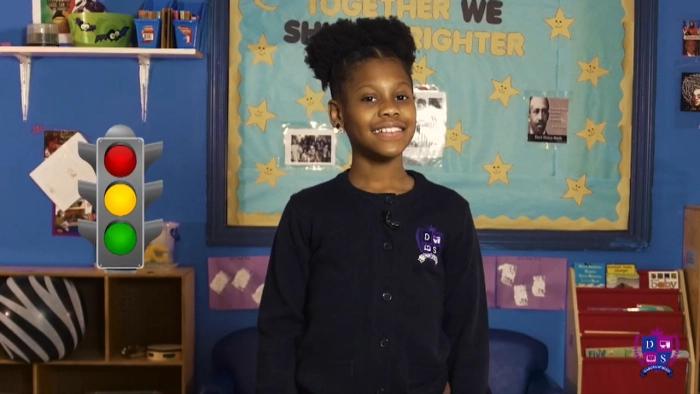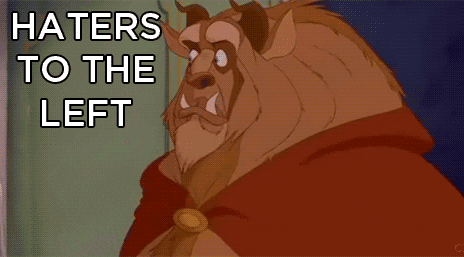Dakota School makes learning fun and informative for elementary students
When COVID-19 forced the nationwide transition to online learning, schoolchildren found themselves at home trying to transition to the concept along with their parents. Ten-year-old Dakota Adeyemi was in a similar situation, but managed to keep herself busy by searching for Black history on the internet.
After taking an interest in Black pioneers and their contributions to society, Dakota decided she wanted to make better use of her time by teaching others about positive Black history.
She approached her mother, Georgia state Rep. Erica Thomas, with an idea that would combine her expanding interest in Black history with her love for teaching and learning. And thus, a new passion project was born: Dakota School.
“I love history and I love Black history,” said Dakota, who lives in Mableton, Georgia, with her mother, father and younger sister. “Every time I went to school I was excited to learn about Black history, but when history came around, there wasn’t any. I knew there was something wrong, so I decided to start Dakota’s School.”
Dakota School is an online show created to make learning about Black history fun for children. Using singing and dancing, interactive lessons and videos, Dakota and her team focused on stepping away from traditional classroom models. Instead, they focused on activities that would make children more receptive to school, not less.
“We just went off the things she likes,” Thomas said. “She likes crossword puzzles, word searches and coloring. So we just put all those things into the workbook. We do crosswords for each lesson so the kids can figure out some of the words they learned, and we did a word search for each one as well. We just did what ’Kota liked. If ’Kota likes it, it will probably work. She helps us come up with the lessons, and it works out. It’s pretty much Dakota’s school and if Dakota likes it, I think the other kids will, too.”
Dakota and her team film Dakota School on Wednesdays, because it is the one day of the week she doesn’t have classes. She says some Wednesdays are for filming and others are for learning and studying.
However, it’s clear that production days aren’t the only times Dakota is working. Thomas says Dakota is very hands-on with the program and does a lot of the work that goes into it.
“Dakota types up her own scripts,” she said. “She types up her fun facts and everything and sends it over to the team, then we make it look great. Dakota does a lot of the work and she’s also been raising a lot of money. For a kid to raise $500 or $1,000 is huge. She’s been raising a lot of money from people all over to pay for video and marketing.”
The process for creating Dakota School has gotten easier, especially compared with what it was like when the program first started in January 2020, around the start of the pandemic.
“The startup process wasn’t that easy. Dakota had some sleepless nights. Sometimes she was up until 12 o’clock in the morning filming and doing things, but she was passionate about it. She’ll pick out the colors, the schemes and everything. She’s really just made this her thing, you know? She’s like, ‘Why not put my name on it, mom? Why not make it my school?’ So the process was strenuous in the beginning, but she’s worked really, really hard.”
Dakota’s favorite part of Dakota School has been learning more Black history. She’s taken a special interest in Black inventors, highlighting George Crum, the inventor of the potato chip, and Garrett Morgan, the inventor of the three-position traffic light. But her favorite inventor is a Black woman, Sarah Boone.
“She was a dressmaker. You know how dressmakers hate getting wrinkles in their clothes? Because of that, she patented and improved the ironing board,” said Dakota.
When she noticed there wasn’t enough information about Black inventors and other Black history pioneers being taught at school, Dakota’s first thought was to talk to her teachers about it. Instead, she took matters into her own hands.
“I was really shy about it,” she said. “I wouldn’t tell my teachers something like that, because I didn’t want to give them any stress. Especially in online school. I had a lot of time, so I just started with Black history because I was really interested in it and I knew a lot about it. So why not start a whole school about it?”
The lack of Black history being taught in schools outside of Black History Month is due in large part to an emphasis on common core standards, a lack of time and resources by most teachers in K-12 classrooms.
Keyana Jaji, an elementary school teacher going into her 21st year as an educator, says teachers often don’t have the freedom or the time to teach about subjects outside of the common core curriculum.
“As teachers, we don’t have a lot of time to do extra, to be honest,” said Jaji, one of Dakota’s teachers at Austell Elementary School in Austell, Georgia. “We don’t have a lot of time to put in extra because we have teaching standards.”
The Common Core States Standards Initiative is an educational initiative that details what students in grades K-12 should know by the end of each school grade. The initiative was put in place in 2010 and focuses mainly on English, language arts and mathematics.
The initiative states that guidelines are meant to prepare students for college and career readiness, and that teachers should have enough time to teach the three core subjects. However, this leaves very little room to teach students about subjects outside of initiative guidelines.
If a teacher typically does find the time, it’s often difficult to find material suitable for elementary school children. As a fourth and fifth grade teacher, Naji has found the best way to incorporate Black history into her classroom is through children’s literature.
“I think, because Black history is American history, a lot of times there’s not a lot of curriculum at the elementary level we could easily pull and fit into what we currently do,” Naji said. “I love to teach Black history through children’s literature. That’s one way that we’re able to do it without it being one extra thing added onto our plates. Now, there’s a lot of children’s literature that includes Black representation and diversity. So it’s fine to just pull a children’s literature book, read it to the kids, talk about the theme, what they see going on and just having those conversations. We also create our own stuff because like I said, there’s not a lot of good curriculum out there. We have to piece together our own stuff.”
Now that Dakota School is active, Naji says, she’s proud of what Dakota has been able to do and looks to include the lessons and videos in her lesson plans.
“She sent me a link to look at it and that was my first time actually seeing the program. I loved it so much that I asked her mother to send me another link because I wanted to share it with my students. It was very entertaining. The fact that someone as young as Dakota has her own school and is standing up in front of all the boys and girls teaching about Black history? To me, that’s very important. I liked the fact that it was interactive, informational, entertaining and short and to the point. I was thinking about how, as she releases more videos, I want to incorporate them into my classroom. I can see easily being able to implement them into my classroom.”
Since its conception, Thomas says, Dakota School has been expanding and has garnered positive responses.
“That’s one of the reasons why we’ve started to put our content on YouTube,” she said. “We were doing sign-ups just on the website, but so many kids want it and they want it for free, so we’re putting a lot of our content on YouTube now. She’s pushing over to the YouTube scene so we can give kids content for free and teach them all about Black history.”
Dakota has also appeared on a number of programs to promote her new school.
“The response has been huge. She’s booked Good Day Atlanta, ESPN and HelloBeautiful. She was in Los Angeles, virtually, on the news. It’s been huge for her and she loves it. This has helped her to step into her own. I’m shocked by the person I’m seeing when she’s doing these interviews and doing these things. We [went] to the Harriet Tubman Museum and she just went all over the museum teaching her friends all about Black history. She’s really morphed into her own little person through teaching Black history.”
When the program was being created, the No. 1 priority for Dakota School was to make sure it would be fun and keep people coming back. In the process, Dakota has been able to let her bright personality shine through her work and inspire those around her. And when asked what her goals were for Dakota School, she had a simple answer:
“I want to make the world a better place by giving people lots of knowledge. I love to have people with knowledge in this world.”










